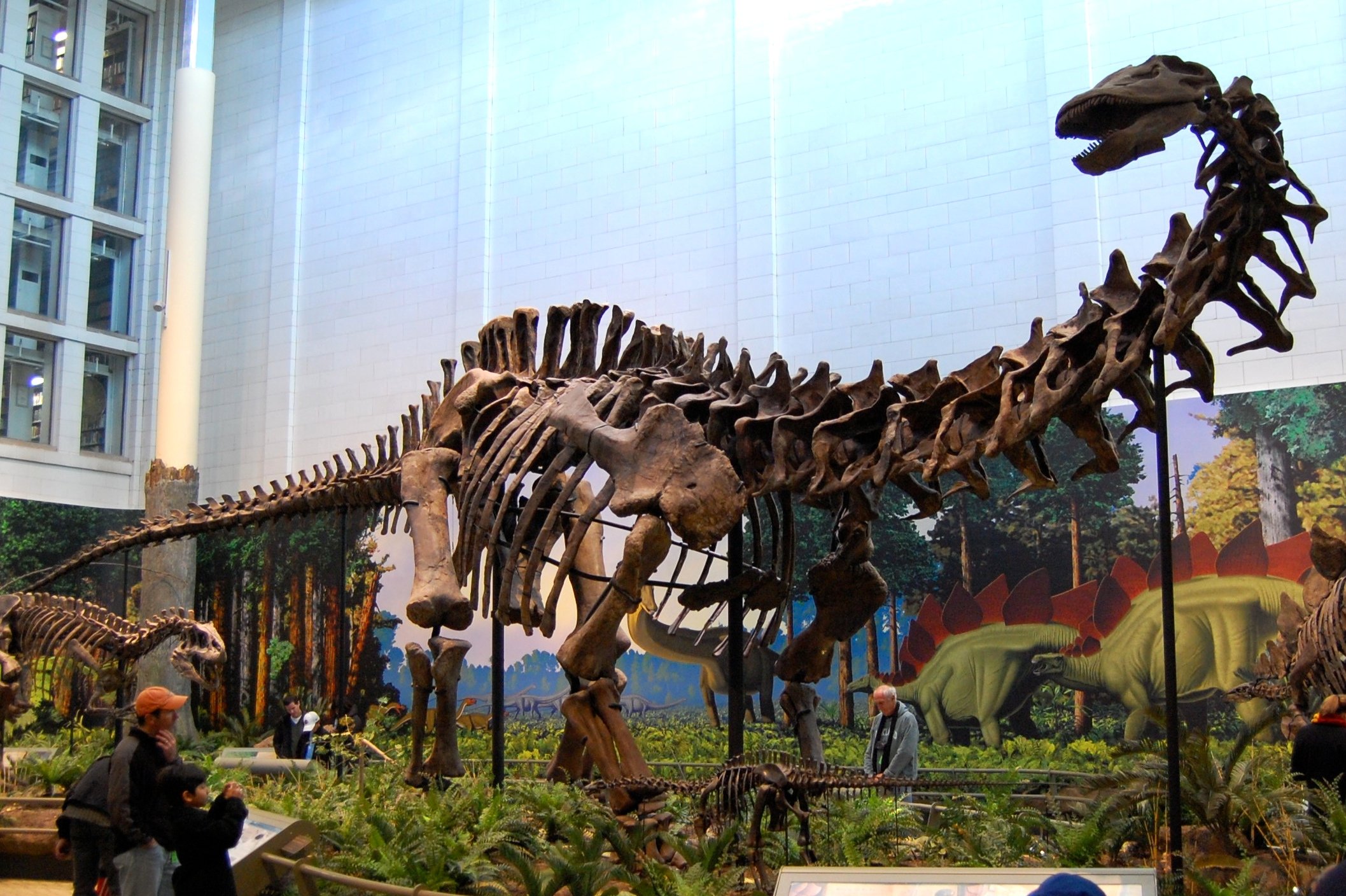
Vikram Vakil, a paleontologist doctoral candidate at the University of Queensland, responded.
It is commonly assumed that most animals from the "dinosaur age" grew to enormous sizes. This is far from the truth. While many non-avian dinosaurs, such as the giant-necked sauropods, did indeed attain gigantic sizes, there were many that were no bigger than a turkey. Over the years, palaeontologists have pondered over this eclectic mix of sizes that prevailed during the Mesozoic Era ("middle life") of Earth’s geological history. A combination of factors was responsible for allowing some of the dinosaurs (specifically sauropods) to attain huge sizes.
Firstly, sauropods belonged to one of the two groups of dinosaurs (saurischians) that had a lizard-like hip bone. Saurischians had hollow bones, like birds nowadays. Birds can fly and maintain elevated temperatures and high metabolism rates, because their bones are traversed with cavities/air sacs, making their bones lightweight. Gigantic sauropods, for example, Diplodocus or Patagotitan, despite being enormous (around 80 tonnes), would still be relatively lightweight because of the pneumatic bones.
Secondly, such a lightweight skeletal framework called for a small-sized head which could easily be balanced on a long neck, thereby allowing them to reach the tops of trees, unlike most animals at that time.
Thirdly, the skulls themselves had teeth which were not specialised for chewing, allowing them to gulp in huge quantities of leaves and branches. More food means more energy, leading us to the fourth factor which is related to heat regulation.
Modern mammals and birds are "warm-blooded", meaning they are able to generate their own body heat and maintain it. Juvenile sauropods were probably warm-blooded, but it is less certain whether this was true of the adults. Their sheer size would have allowed them to stay warm, because body surface ratio and volume are inversely related to each other. A gigantic adult sauropod with its huge body had a great volume, but its surface area was comparatively small. Hence, heat retention would have been better. Dinosaurs in general tapped into every available ecological niche during their time and this was nature’s way of experimenting with beings attaining a wide array of sizes, and numerous conceivable forms, shape and colour.
By contrast, it is difficult to get so big on land with heavy, sturdy (non-pneumatic) bones. Gravity slows you down. This is why African elephants are the largest terrestrial animals alive today. Whales, living in water, are able to grow big because gravity is counterbalanced by buoyancy.
Have a question you’d like answered? Email to question.aas@gmail.com.












